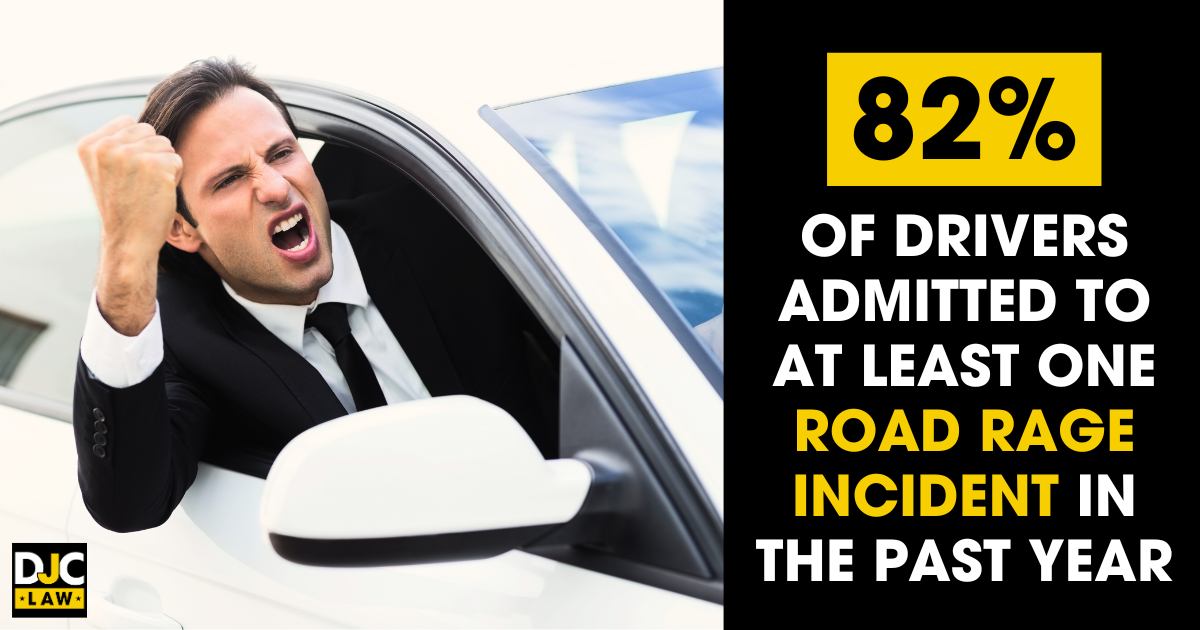
In some states, you may have seen motorcyclists weaving through slow-moving or stopped traffic. It’s a strategy that enables motorcyclists to keep going and avoid taking up extra space on the road. Known as lane splitting, it’s a driving technique that elicits a range of opinions.
Some people say it’s dangerous, whereas others claim it’s a road safety technique. The practice has been officially outlawed in Texas, meaning you can be pulled over and issued a citation if you’re caught doing it. If you’ve been injured in a motorcycle crash, an experienced Austin motorcycle accident lawyer can help you understand your legal options and pursue compensation.
With the National Highway Traffic Safety Administration (NHTSA) reporting that 2022 saw the highest number of motorcyclists killed since 1975, some believe actions like banning lane splitting are crucial to getting these numbers down.
In today’s guide, we examine the issue of lane splitting, its legal status in Texas, and how it’s worked in other states.
Key Takeaways
- Lane splitting involves riding along the white lines that divide lanes. It allows motorcyclists to ride through slow-moving traffic.
- House Bill 4122 officially made lane splitting illegal in all circumstances in 2023, having previously existed in a legal grey area where traffic officers were permitted to use their discretion.
- Advocates of lane splitting point to studies from California, where splitting is legal, to reduce traffic congestion and the safety risk to the rider. However, opponents claim it makes roads more dangerous, increasing the risk of accidents.
- Riders caught lane splitting in Texas may receive a ticket of up to $175, but they may also be charged with reckless driving under certain circumstances.
- Lane splitting could impact your personal injury case if you’re injured while riding since it’s now illegal. Speak to an attorney to support your case and maximize your potential settlement award.
What is Lane Splitting?
Lane splitting is the practice of riding your motorcycle between the white lines on the road, which is why it’s sometimes called “white lining.” It allows motorcycles to cut through traffic traveling in the same direction.
Understand that this isn’t technically the same as lane filtering, even though they are similar. Instead, lane filtering involves riding between stopped vehicles to reach the front. In most cases, you’ll see this at intersections with red lights.
Texas Formally Outlaws Lane Splitting
Is lane splitting legal? Lane splitting has existed in a legal grey area in Texas, with no specific rules and regulations explicitly addressing the practice. In recent years, the law has fallen back on the Texas Transportation Code Sec. 545.060, where operators are required to drive as close as possible within a single lane.
It wasn’t until the 2023 Texas State legislative session that Texas Governor Greg Abbott signed House Bill 4122 into law. For the first time, the law clearly stated that lane splitting was illegal and would incur a fine of no less than $175 if caught.
Legal Motorcycle Practices in Texas
Lane splitting is a prohibited practice, but Texas continues to allow other motorcycle practices. In particular, lane sharing remains permitted, and they still have the same full lane rights as other vehicles.
Here are three practices riders should be aware of:
- Lane Sharing – Two motorcycles are permitted to ride side-by-side as long as they don’t impede traffic, and both riders have agreed.
- HOV Lane Usage – High-Occupancy Vehicle (HOV) lanes may also be used by motorcycles, even if there’s only a rider with no passenger.
- Full Lane Rights – Motorcyclists may take up a spot in a single lane, with all other vehicles required to respect this right. For example, a passenger vehicle can’t shunt you out of the way just because there’s space.
Is Lane Splitting Safe?
Motorcycle advocacy groups have supported lane splitting, arguing that more and more countries are legalizing the practice, whereas parts of the U.S. are going backward. Generally, lane splitting can be safe, but only when performed under the correct conditions.
According to The Hurt Report, 59.2% of accidents studied were caused by moderate to heavy traffic. Lane splitting reduces your exposure to accelerating and decelerating traffic on congested streets, which can reduce rear-end collisions. The NHTSA reveals that 5% of fatal motorbike crashes involved rear-end crashes.

It’s also vital to mention that the U.S. is somewhat of an outlier in its stance on lane splitting. Highly urbanized locations in Europe and Asia have accepted the practice for a long time, allowing operators to move between vehicles.
According to the 2015 SafeTREC report, the study concluded that motorcyclists who split lanes were significantly less likely to be struck from behind and were less likely to sustain severe injuries or be killed.
In conclusion, there are compelling arguments for legalizing the practice of lane splitting in the name of enhanced road traffic safety for motorbikes.
Benefits of Lane Splitting
Lane splitting has several benefits for motorcyclists and other drivers. Some of the most prominent advantages include reducing traffic congestion, allowing motorcyclists to ride more efficiently, and enhancing rider safety.
Here’s a rundown of the primary lane-splitting benefits:
- Reduced Congestion – Allowing motorcycles to move between lanes means they take up less space on the road, contributing to mitigated congestion.
- Time Efficiency – Splitting allows motorcyclists to evade heavy traffic, reducing commute times.
- Enhanced Safety – Stop-and-go traffic is incredibly dangerous for motorcyclists because of the chances of getting rear-ended spikes. By constantly moving, motorcyclists can reduce their risk.
- Environmental Benefits – When motorcyclists idle in traffic, they contribute more emissions. By reducing idling time, motorcyclists can lower their carbon footprints.
- Greater Maneuverability – Motorcyclists also argue that lane splitting provides extra options to keep them mobile and at ease. Advocates state this makes dealing with unpredictable traffic in urbanized areas easier.
What are the Risks of Lane Splitting and Filtering?
Lane splitting and filtering have challenges and risks. Opponents of splitting have cited many of these, including the potential to be hit by other vehicles, driver aggression, and being invisible to other drivers.
Many of these risks are valid. The issue is determining whether the benefits outweigh the risks overall. Here’s a breakdown of the most significant risks associated with splitting and filtering:
- Collisions – Motorcyclists may misjudge how much space they have and strike or be struck by the sides of vehicles, especially by side mirrors.
- Road Rage – Drivers often get frustrated when they see motorcyclists “skipping the line,” as it were, even when they aren’t doing anything illegal. According to The Zebra, 82% of drivers admitted to experiencing at least one road rage episode in the last year.
- Speed Differences – Differences between the bike’s speed and everyone else’s can force drivers to switch lanes suddenly and unpredictably.
- Inexperience – Successful splitting and filtering relies on the rider making the correct judgment calls. Drivers who are more prone to risk-taking or those with poor reflexes could be putting themselves in danger.
- Being Invisible – Negotiating larger vehicles with blind spots, such as tractor-trailers and buses, can be tricky. These drivers often can’t see riders, so splitting and filtering could make them more vulnerable.
What are the Requirements for Motorcycles in Texas?
All motorcyclists are required to abide by specific requirements on all Texas roads, per the Texas Transportation Code. These include being required to stay within a single marked lane, properly signal before lane changes and turns, and maintain a safe following distance.
Motorcyclists are also mandated to:
- Always wear a U.S. Department of Transportation-approved motorcycling helmet if you’re under the age of 21, possess no medical insurance, or haven’t completed an accredited motorcycle safety course.
- Use headlights and taillights during the day and at night.
- Hold a motorcycle liability insurance policy that follows the 30/60/25 model. In other words, your coverage must be worth $30,000 for each injured person, $60,000 per accident, and $25,000 in property damage coverage.
Naturally, you must also follow all posted speed limits and obey all traffic laws just like any other road user.
What are the Penalties for Lane Splitting in Texas?
Traffic officers are entitled to pull you over if they see you lane-splitting on any public road in Texas. Basic violations of Texas’ lane-splitting law carry a fine of up to $175 per offense, assuming no other aggravating factors exist.
It’s vital to mention that other penalties may apply if you were lane splitting dangerously or caused an accident. This may include increased insurance premiums or seeing your license suspended. In extreme cases, you may even be criminally charged with reckless driving, which may carry jail time.
Public Opinion on Lane Splitting in Texas

Lane splitting in Texas is a controversial issue, with much of the population having strong opinions on the matter. According to the latest Texas Department of Transportation survey, 60% believed lane splitting should be legalized, whereas 40% believed it should be banned.
It’s clear that the general public is highly divided on the matter, but there’s a clear majority for legalizing the practice. Both sides have valid arguments, but study after study has indicated that it improves road safety rather than detracts from it.
Moreover, lane splitting isn’t a new concept. Europe and Asia have long had legal lane splitting in place, and their road safety records are typically much better than every state in the U.S.
Understanding Lane Splitting Laws in Texas
The issue of lane splitting can be confusing, with many motorcyclists unaware that the practice has been formally outlawed. For years, lane splitting likely wouldn’t get you pulled over unless it was performed dangerously, but now you could be pulled over whether you’re doing it safely or not.
Let’s focus on the five key aspects of splitting in Texas.
Lane Splitting is Now Illegal in Texas
Lane splitting was okay for riders because it was exploited via a loophole. The loophole in question meant that it wasn’t legal, but it wasn’t illegal, meaning you couldn’t be ticked purely for splitting lanes.
In 2023, House Bill 4122 closed this loophole by introducing two laws:
- A motorcyclist may not operate the motorcycle between lanes of traffic in the same direction.
- A motorcyclist may not pass a motor vehicle while in the same lane as the vehicle being passed.
Any rider violating either rule may be fined up to $175 as standard.
Lane Sharing is Allowed But With Conditions
Lane sharing is a permitted practice in Texas. If you’re riding with someone else, you may ride side-by-side in the same lane. The only caveat is that you can’t impede traffic, and you must agree to it with the other rider.
Reckless Driving Charges May Apply
Reckless driving charges could be levied if an officer believes you were lane splitting in a way that could increase the chances of an accident. Where splitting crosses over into reckless driving is down to the discretion of the police officer.
If you’re charged with reckless driving, you could be fined up to $200 and see your license suspended. You could even receive a jail term, depending on your driving record and how severe the offense was.
However, before you get alarmed, this isn’t a new change. Even when lane splitting was neither explicitly legal nor illegal, dangerous riders could still be charged with reckless driving regardless.
Motorcyclists Must Follow the Same Traffic Laws as Other Vehicles
Under Texas law, motorcyclists have no special rights. All motorbikes must be ridden according to the same rules and laws as any other vehicle, including right of way, lane changes, and speed limits.
Safety Should Always Be the Top Priority
Dealing with heavy traffic is highly frustrating, especially when you’re an accomplished rider capable of lane splitting and heading through it. Due to the 2023 law change, motorcyclists must now consider other strategies for dealing with congestion or simply being patient.
Although it might be tempting to lane split regardless, it’s still against the law, and the penalties aren’t worth it.
States Where Lane Splitting is Legal
Texas isn’t alone in its stance on lane splitting. On the contrary, the vast majority of states don’t permit lane splitting. Other states have legalized the practice or have no law that makes lane splitting a violation.
Here’s a breakdown of the states where riders can continue to lane split:
- California – California has fully legalized lane splitting, meaning California Highway Patrol can only pull you over if you’re doing it dangerously. The Golden State has gone one step further and made it illegal even to attempt to block or impede a motorcyclist from lane splitting.
- Delaware – Delaware exists in a legal grey area. No law states lane splitting is legal or illegal.
- Kentucky – Kentucky also has no law relating to lane splitting. However, officers may still pull you over if they believe you’re driving unsafely or recklessly and can still issue a citation.
- Mississippi – No law exists on lane splitting in Mississippi to make it illegal. Instead, law enforcement has complete discretion in ticketing riders for it.
- Montana – Montana has legalized lane splitting under specific circumstances. For example, riders must only do it on wide lanes and stay within 10 mph of nearby traffic.
- Nebraska – Nebraska has no law outlawing lane splitting.
- Utah – Both lane splitting and lane filtering are permitted in Utah. However, it comes with caveats. The main exceptions are that you can’t split lanes on a freeway or if the posted speed limit is above 45 mph.
Why Lane Splitting is Illegal in Texas
Lawmakers who have campaigned against lane splitting in Texas have cited several reasons why the ban should be maintained. These concerns focus on driver behavior, infrastructure challenges, and law enforcement concerns.
Let’s investigate why lawmakers believe the practice should remain illegal.
Road Space
It’s no secret that Texas’ highways are struggling to cope with the influx of traffic. The success of the state has resulted in its population growing by nearly 5% from 2020 to 2023, according to statistics from the Texas Demographic Center.
Many have cited that the average highway size is much smaller than in states like California, where lane splitting is legal. Narrower lanes and less space mean splitting is more dangerous for riders in Texas.
Driver Expectations
Texas drivers often don’t expect motorcycles to appear between lanes because lane splitting has never been a formal legal practice. The lack of expectations means that drivers simply aren’t looking for motorcycles as standard, leading to potentially dangerous situations, particularly when drivers are:
- Changing lanes without checking blind spots.
- Opening car doors when they’re stuck in traffic.
- Merging suddenly in stop-and-go traffic.
Weather Conditions
Texas experiences the complete spectrum of weather conditions throughout the year. Frequent rain and episodes of snow and ice can increase road danger. Varying weather patterns create extra hazards that are especially dangerous to motorcycles cutting through traffic, including:
- Reduced visibility
- Slick road surfaces
- Strong crosswinds
- Extreme heat
High Average Speeds
Texas drivers often maintain higher-than-average speeds on highways. Unlike other states, Texas’ legal speed limits are higher. Likewise, with more considerable distances to cross and more rural roads accommodating high speeds, the risks to riders are already substantial enough without adding lane splitting into the mix.
Law Enforcement Hurdles
Law enforcement has also weighed in on the matter and has commented that banning lane-splitting makes their lives easier. In the past, it was down to officers to make judgment calls on whether lane splitting had crossed into reckless or dangerous driving territory. Now, they have clarity on the matter, which has helped:
- Simplify traffic monitoring.
- Respond to accidents faster.
- Ensure consistent traffic flows.
- Enforce other safety laws relating to motorcycles.
How Lane Splitting Can Impact a Personal Injury Claim in Texas
Lane splitting in Texas can substantially impact your personal injury claim. Since it’s against the law, this will be used against you if you are in an accident while carrying out the practice.
Insurance companies may react to your personal injury claim by:
- Denying or reducing your claim with the justification that you were breaking the law.
- Arguing that you’re the at-fault driver because you were splitting lanes when you weren’t supposed to.
- Refusing to cover your medical expenses because you broke the law.
Even the most experienced motorcycle accident attorney can’t get you a full settlement when you were lane splitting because you committed a traffic offense. However, you may still receive some compensation for your injuries due to the shared liability model Texas operates under.
In short, the consequences of getting into a lane-splitting accident mean that you will see a smaller settlement because you were breaking the law at the time, which will be seen as a contributing factor.
For example, suppose that Rider A was hit by Driver B when the latter tried to change lanes at low speeds without using their turn signals. Clearly, Driver B didn’t pay due care and attention and broke the law themselves, but it could be argued that if Rider A hadn’t illegally split lanes, then the collision would have never happened in the first place.
And Driver B’s defense team would be correct.
Maximizing Your Compensation Under the Texas Modified Comparative Negligence System
If you’re involved in a motorcycle accident and you were splitting lanes, don’t assume that you aren’t entitled to any compensation at all for your injuries. Working with a skilled attorney could still enable you to receive some damages.
That’s because Texas uses a modified comparative negligence system. Known as the 51% bar rule, this means that as long as you were less than 51% responsible for an accident, you can still receive financial compensation. On the other hand, if you were mostly to blame for an accident, you’d be barred from seeking a financial settlement.
And this is why hiring an experienced personal injury lawyer comes in useful. It’s their job to ensure that the blame you assume falls below 51% so you can still receive some damages through a negotiated settlement.
So, what might this look like? Let’s assume that you’re 30% to blame for an accident because you were illegally lane-splitting. Your attorney has successfully argued that the other driver is still mainly to blame for your injuries.
If you received $200,000 in total damages from the court, you would eventually receive $140,000 because your settlement would be reduced by 30%.
The only reason this outcome occurred is because your attorney minimized your contribution to the accident. If you’d attempted to tackle the case yourself, the chances are you wouldn’t have received a settlement at all, or your final compensation amount would be even lower.
Can I Fight a Lane Splitting Ticket in Texas?
Fighting a lane-splitting ticket in Texas is extremely difficult because the practice is illegal. If it’s your word against the traffic officer, the chances are you will lose every time. Instead, the only real defense is that you were dealing with exceptional circumstances.
For example, if you were being chased by a road rage driver and your safety was at risk, you could argue that you were lane splitting to preserve your personal safety. Another example could be that you only found yourself splitting lanes to avoid a hazard, such as another vehicle suddenly stopping, and you didn’t have enough time to hit the brakes.
However, getting a lane-splitting ticket overturned is extremely rare now that lane-splitting has been officially prohibited. Contact an attorney to build your case if you believe you were incorrectly ticketed.
Future Prospects for Lane Splitting in Texas
In 2025, lane splitting remains illegal, but efforts have been made over the years to legalize the practice. Back in 2015, Senator Kirk Watson of the Texas State Senate introduced Senate Bill 442 to legalize lane splitting in certain circumstances, but the bill failed to pass both the state house and senate.
Likewise, as recently as 2023, an attempt was made to reverse the ban by allowing lane splitting when traffic was traveling at 20 mph or less through the Texas legislature. If passed, motorcyclists would have been able to split lanes as long as they didn’t exceed the speed of ambient traffic by 10 mph or more. Again, this attempt failed.
Advocates have continued campaigning to legalize lane splitting in the Lone Star State, citing studies from California and other states. The argument is that lane splitting improves safety and reduces traffic congestion, two issues Texas has struggled with in recent years.
Currently, no further legislative efforts have advanced, meaning riders should expect splitting to remain illegal in the near future.
Texas Lane Splitting FAQs
Is lane splitting illegal in all 50 states?
Only California has fully legalized lane splitting. In Montana and Utah, lane splitting is permitted only in specific circumstances. In all other states, lane splitting is either explicitly illegal or exists in a legal grey area.
Before driving in any state, it’s vital to familiarize yourself with local laws so that you don’t inadvertently get a ticket.
Can motorcycles ride on the shoulder in Texas?
Sometimes, you can ride on the shoulder in Texas as an alternative to lane splitting. Texas Transportation Code Section 545.058 reveals that drivers can legally drive on paved or “improved” shoulders in some instances. Unless you’re sure, it’s best to avoid riding on the shoulder unless you need to.
Is lane filtering legal in Texas?
No, lane filtering is illegal in Texas. The same bill that outlawed lane splitting also outlawed lane filtering, meaning you can’t ride between columns of vehicles under any circumstances without risking a ticket.




